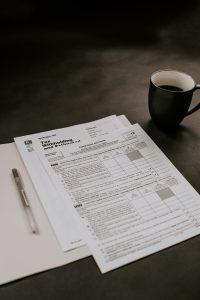Volatility is a measure of the degree of price variation of an asset over a certain period. In the forex market, volatility is a critical component to consider when trading. Volatility can be a double-edged sword, as it presents both opportunities and risks. However, if approached carefully, volatility can be traded profitably. In this article, we’ll delve into the nitty-gritty of how to trade volatility in forex.
1. Understand the market
The first step in trading volatility is to understand the market. Familiarize yourself with the currency pairs you want to trade, and learn about their historical volatility. You can use technical indicators such as Bollinger Bands, Average True Range (ATR), or the Relative Strength Index (RSI) to measure volatility.
2. Choose a trading strategy
There are numerous trading strategies that traders can use to trade volatility in forex. Some of the most popular ones include:
– Breakout trading: This strategy involves taking advantage of sudden price movements. Traders look for key levels of support and resistance, and once the price breaks out of these levels, they enter a trade.
– Range trading: This strategy involves trading within a range of prices. Traders identify a trading range and buy at the bottom and sell at the top.
– News trading: This strategy involves trading around major news events. Traders analyze the news and enter trades based on the anticipated market reaction.
3. Use stop losses
Stop-loss orders are crucial when trading volatility. They help protect traders from significant losses in case the market moves against them. Traders should set their stop-loss orders at a reasonable distance from their entry point, taking into account the volatility of the currency pair.
4. Manage your risk
Trading volatility can be risky, and traders must manage their risk effectively to avoid significant losses. One way to manage risk is by using proper position sizing. Traders should only risk a small percentage of their trading account on each trade. Additionally, traders should avoid overtrading and stick to their trading plan.
5. Be patient
Volatility can be unpredictable, and traders must be patient when trading it. Traders should wait for the right trading opportunities and avoid entering trades based on emotions. It’s essential to have a trading plan and stick to it, even when the market is volatile.
6. Use leverage wisely
Leverage can amplify profits, but it can also increase losses. Traders must use leverage wisely when trading volatility. It’s important to understand the risks associated with leverage and use it only when necessary.
7. Keep an eye on the news
News events can significantly impact market volatility. Traders should keep an eye on economic indicators, political events, and other news that could affect the currency market. By being aware of these events, traders can adjust their trading strategy accordingly.
In conclusion, trading volatility in forex requires a solid understanding of the market, a well-defined trading strategy, and proper risk management. By following these tips, traders can take advantage of market volatility and trade profitably. Remember to be patient, keep emotions in check, and always have a trading plan.





